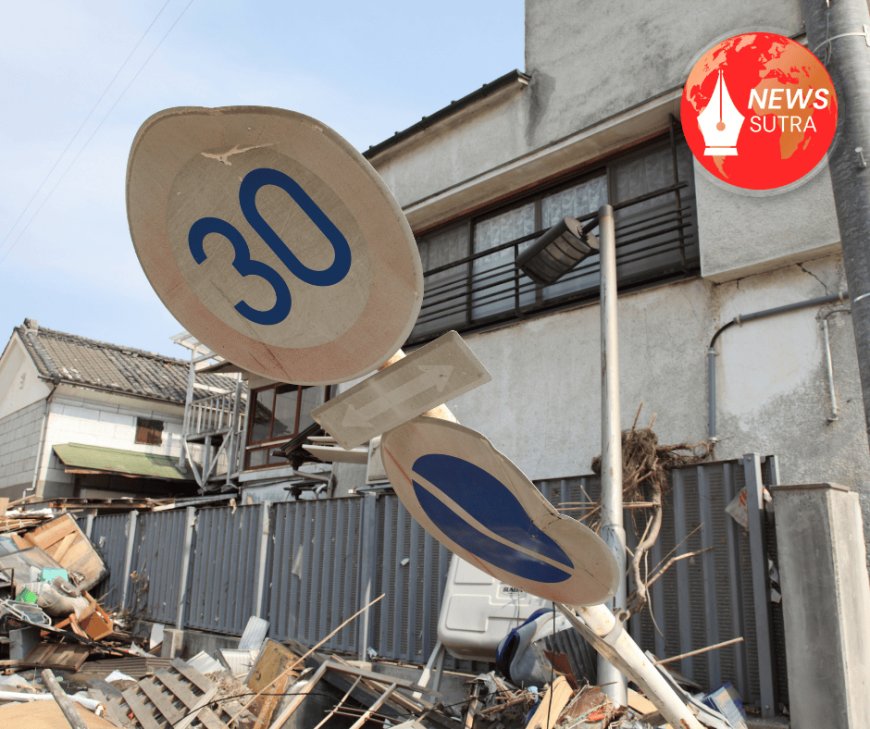Aftershocks of Uncertainty: Japan Grapples with Series of Devastating Earthquakes
A comprehensive report on the recent earthquakes in Japan, detailing seismic activity, government response, casualties, and recovery efforts. Insightful, human-centered coverage for high-value news readership.

A Nation Shaken: Series of Powerful Earthquakes Rock Japan
Japan, one of the most seismically active nations on Earth, is once again in the global spotlight following a series of powerful earthquakes that struck the country in late June and early July 2025. The tremors, some of which exceeded a magnitude of 7.0, have left behind a trail of devastation, disrupted daily life, and renewed discussions on disaster preparedness in one of the world’s most earthquake-resilient countries.
Timeline of Events: What Happened and Where
The seismic activity began on June 27, 2025, when a magnitude 6.8 earthquake struck off the Noto Peninsula in Ishikawa Prefecture. Initially thought to be a one-off event, the tremors continued to ripple across western and central Japan over the next several days. The most powerful jolt came on July 1, when a magnitude 7.3 quake was recorded offshore near the Sea of Japan, triggering widespread panic and minor tsunami alerts.
These earthquakes occurred along the Nankai Trough and the Japan Trench, both of which are known for producing high-magnitude quakes due to the complex subduction of tectonic plates.
Casualties and Damage Assessment
As of the latest reports from the Japan Meteorological Agency (JMA) and the Fire and Disaster Management Agency (FDMA), at least 47 people have died, and over 600 have been injured, with numbers expected to rise as search and rescue operations continue.
Entire neighborhoods in Kanazawa, Toyama, and Niigata reported structural collapses, landslides, and infrastructure breakdowns. The bullet train service (Shinkansen) was temporarily halted, and major highways were closed due to cracks and debris. Thousands have been displaced and are now residing in temporary shelters.
Government and Emergency Response
Japan’s Prime Minister, Fumio Kishida, addressed the nation within hours of the July 1 quake, declaring a state of emergency in affected regions. He assured citizens that “every available resource” would be deployed to ensure safety, deliver aid, and begin rebuilding efforts.
The Japan Self-Defense Forces (JSDF) have been mobilized to assist in evacuation, supply distribution, and search operations. In addition, over 2,000 emergency personnel from across the country have been dispatched to support overwhelmed local authorities.
The Ministry of Health has also deployed mobile medical units to ensure those injured or displaced receive adequate care, especially in areas where hospitals were damaged or inaccessible.
Tsunami Warnings and Coastal Evacuations
While initial tsunami warnings following the July 1 quake were later downgraded, residents along Japan’s western coast experienced waves up to 1.2 meters high. Local governments promptly evacuated low-lying communities, a move credited with preventing further loss of life.
The JMA continues to monitor the situation closely, cautioning that aftershocks, some potentially severe, are likely to persist in the coming weeks.
Global Response and Solidarity
World leaders and international organizations have extended their condolences and support to Japan. The United Nations Office for Disaster Risk Reduction (UNDRR) praised Japan’s swift response and emphasized the importance of continuing to invest in early warning systems and resilient infrastructure.
India, the United States, and several EU nations have offered humanitarian aid, rescue personnel, and logistical support.
The Science Behind the Quakes
Japan lies on the Pacific Ring of Fire, a volatile zone where several tectonic plates — including the Pacific, Philippine Sea, and Eurasian plates — intersect. The recent quakes were the result of subduction activity, where one plate slides beneath another, releasing enormous energy in the form of seismic waves.
Experts from the University of Tokyo’s Earthquake Research Institute noted a worrying pattern of increased seismic activity in the Japan Sea region, urging the government to reassess current infrastructure resilience, especially in older urban areas.
Lessons Learned and Looking Ahead
Despite Japan’s world-class disaster preparedness, these quakes serve as a reminder of nature’s unpredictable force. The Kobe earthquake in 1995, the Tohoku disaster in 2011, and now the 2025 seismic events each underline the need for continuous improvement in emergency response systems, public education, and urban planning.
Local governments are now evaluating evacuation protocols, retrofitting plans for aging infrastructure, and enhancing real-time alert systems that use both AI and mobile technology to reach citizens instantly.
Human Stories from the Ground
Amid the chaos, stories of resilience are emerging. In Kanazawa, a local teacher shielded her students during the tremors, ensuring everyone made it safely to an evacuation zone. Volunteers have formed grassroots response teams, delivering food and water to isolated communities.
One survivor, 68-year-old Takashi Murata from Toyama, recounted: “The earth roared. I had never felt anything like it before. But the young people in my village helped everyone get to safety. We’re alive because we helped each other.”
Final Thoughts
The recent earthquakes are a somber chapter in Japan’s long history of seismic disasters. Yet, they also highlight the strength, resilience, and unity of the Japanese people. As rebuilding begins, the world watches with respect and solidarity, knowing that Japan will rise again—stronger, smarter, and more prepared.











